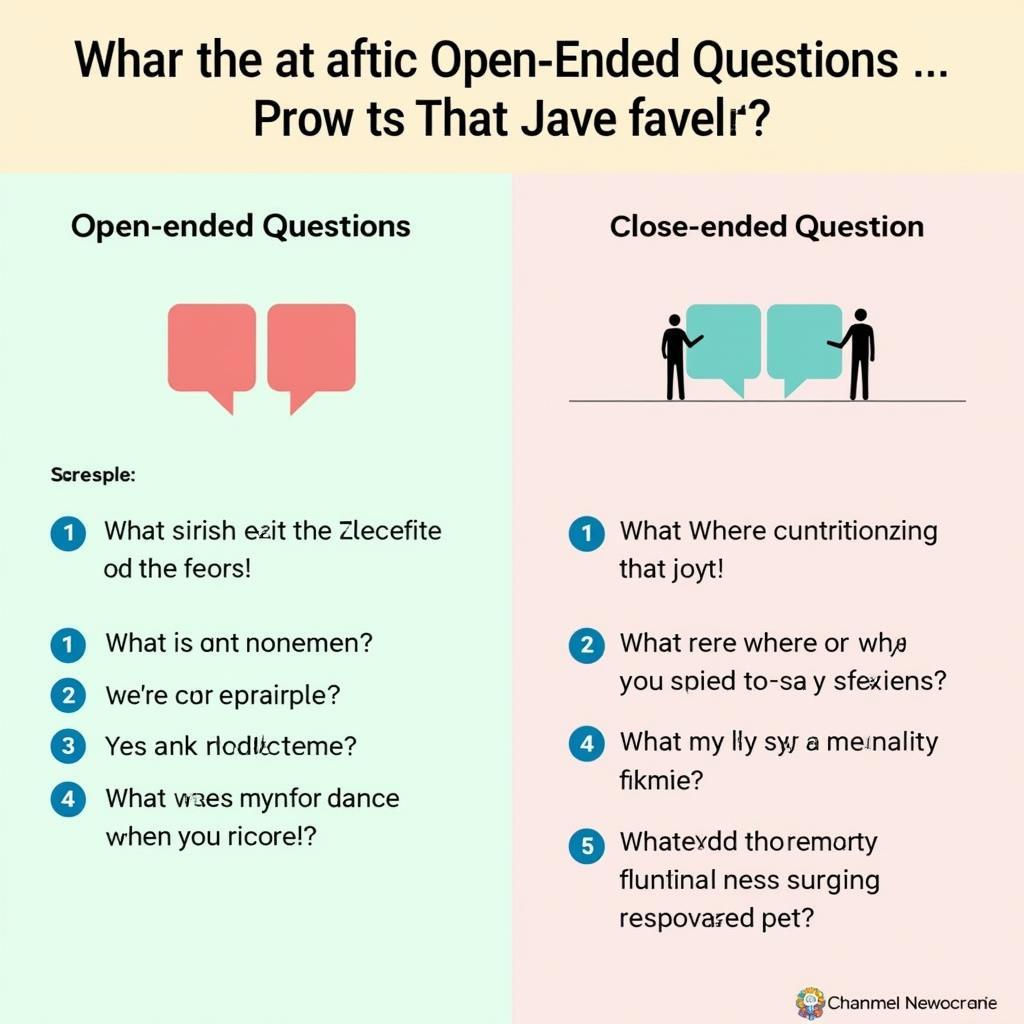Open Ended Questions In Research offer a powerful way to gather rich, qualitative data, delving deeper than simple yes/no answers. They encourage participants to express their thoughts and feelings freely, providing valuable insights that can inform decision-making and drive innovation. This article explores the nuances of using open ended questions effectively in various research contexts, from user surveys to paranormal investigations.
One of the key advantages of using open ended questions is the opportunity to discover unexpected perspectives. While structured questionnaires can be useful for gathering quantifiable data, they often limit the range of responses. Open-ended questions, on the other hand, allow for a more nuanced understanding of complex issues. For instance, in market research, understanding the “why” behind consumer preferences is crucial for developing successful products and marketing campaigns. Similar to how we ask questions to ask for market research, open-ended questions allow for deeper exploration. Consider the difference between asking “Do you like this product?” and “What do you like or dislike about this product?” The latter provides far more valuable information. The same principle applies when conducting a user research survey, aiming to understand user behavior and preferences in a specific context.
Crafting Effective Open Ended Questions
Developing effective open ended questions requires careful consideration. The wording should be clear, concise, and neutral, avoiding leading questions that might bias the responses. Questions should also be relevant to the research objectives and tailored to the target audience.
Avoiding Leading Questions and Bias
It’s essential to avoid leading questions that suggest a particular answer. For example, instead of asking “Don’t you think this product is better than the previous version?”, a more neutral phrasing would be “How does this product compare to the previous version?” This allows participants to express their genuine opinions without feeling pressured to agree.
 Open-Ended Question Examples
Open-Ended Question Examples
Tailoring Questions to Your Audience
The language and complexity of the questions should be appropriate for the target audience. When conducting research with children, for example, simpler and more concrete questions are necessary. Similarly, when researching specialized topics, using relevant jargon can be helpful, but it’s crucial to ensure the participants understand the terminology.
Open Ended Questions in Paranormal Research
The realm of Paranormal Research presents unique challenges and opportunities for using open ended questions. When interviewing witnesses of unexplained phenomena, open ended questions can help gather detailed accounts of their experiences. For example, instead of asking “Did you see a ghost?”, a more effective approach would be “Can you describe what you saw?” This encourages the witness to provide a rich narrative, revealing details that might otherwise be overlooked. Just like in a naval medical research center, careful and detailed documentation is crucial for understanding complex phenomena.
Similarly, in experimental settings, open ended questions can be used to explore the subjective experiences of participants. For example, in a study on psychic abilities, asking participants to describe their impressions during a remote viewing experiment can provide valuable qualitative data. Even in seemingly unrelated fields like researching AMP Research Power Step Motor functionality, open ended questions can elicit valuable feedback on user experience.
Analyzing Qualitative Data from Open Ended Questions
Analyzing the data collected from open ended questions involves a different approach than analyzing quantitative data. Researchers often use techniques like thematic analysis to identify recurring patterns and themes in the responses. This involves carefully reading and coding the transcripts, looking for common words, phrases, and concepts.
 Qualitative Data Analysis
Qualitative Data Analysis
Conclusion: Harnessing the Power of Open Ended Questions
Open ended questions in research are invaluable tools for gathering rich, qualitative data that can deepen our understanding of complex phenomena. By crafting carefully worded questions and employing appropriate analytical techniques, researchers can unlock valuable insights and drive meaningful discoveries. Whether exploring consumer behavior or investigating the mysteries of the paranormal, the power of open-ended questions lies in their ability to reveal the nuances of human experience. Utilizing open-ended questions, just as in spell research sod or other specialized fields, allows researchers to delve into the intricate details of a subject.
FAQ
- What are open-ended questions?
- Why are open-ended questions important in research?
- How do I write effective open-ended questions?
- What are some examples of open-ended questions?
- How do I analyze data from open-ended questions?
- What are the benefits of using open-ended questions compared to closed-ended questions?
- How can I avoid bias when using open-ended questions?
Common Scenarios for Open-Ended Questions
- User interviews: Understanding user needs and pain points.
- Market research: Exploring consumer preferences and motivations.
- Qualitative studies: Gathering in-depth insights into complex issues.
- Paranormal investigations: Collecting detailed accounts of unexplained phenomena.
Further Exploration
For additional insights into user research, explore our user research survey. You can also find resources on conducting effective market research on our questions to ask for market research page.
For any assistance, please contact us at Phone Number: 0904826292, Email: research@gmail.com or visit us at No. 31, Alley 142/7, P. Phú Viên, Bồ Đề, Long Biên, Hà Nội, Việt Nam. We have a 24/7 customer service team.